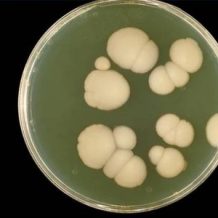Yeast Causes

Common yeast causes include:
- high pH levels in the body
- clothes that retain body heat and moisture
- reactions to antibiotics
- elevated blood sugar
- hormonal changes at puberty or menopause.
However, an equally common but less recognized factor is the result of destroying good bacteria in the body. Yeast causes have these culprits:
Often an antibiotic is prescribed by your dentist before or after a tooth extraction. This antibiotic not only kills the unwanted bacteria in your body, but can also kill the “good” bacteria in your mouth. The power of your immune system is weakened. Before you know what’s happened you develop thrush or other common yeast maladies. Yeast fungus thrives in the moisture and warmth of non-cotton, skin tight, or dirty clothes. Unbleached, white cotton underwear and loose fitting clothing deter the dual culprits of moisture and warmth. Never wear damp or soiled underwear to bed. Think dirty diaper and you will understand. Yeast may be an uninvited guest.
Beneficial bacteria
Allergic reactions are another kind of culprit of yeast causes. Some odor-causing bacteria that are eliminated by under-arm deodorants happen to be good bacteria. Guess what moves in when they are gone. Yeast! Certain brands of soap not only contain strong chemicals but are disruptive to the vaginal area, and can damage mucus membranes. This is a prime yeast cause. Avoid bathing in soapy bathwater. Perfumed artistic toilet paper can also kill good bacteria and open the door to yeast. Do not use scented or dyed toilet paper, if you are prone to recurring yeast infections. Many laundry detergents and fabric softeners have allergenic dyes and perfumes that remain in washed clothing even after a normal rinsing. This residue may smell nice but it can kill the good bacteria and leave you vulnerable to yeast. Additives in bubble baths or bath salts, scented tampons or sanitary pads, even feminine deodorant sprays, all these can also kill good bacteria and become a yeast cause culprit.
Diet matters
High levels of sugar and fat may be the culprits in recurring yeast infections. Rising levels of obesity and yeast infections in the US seem to support this. However most of the evidence is anecdotal—not based on clinical studies. Some prominent dieticians are now recommending a specialized diet as a defense against yeast infection. Instead of eating a lot of the simple carbohydrates found in sweets, processed foods, and most items served by fast food restaurants; eat more complex carbohydrates found in fresh vegetables, and unprocessed grains. According to nutritionists, this diet not only improves your body’s ability to fight off yeast infections, it improves your metabolism and you lose weight without feeling hungry all day.
Because both men and women can receive and give yeast infections current thinking is that sexual transmission is a yeast cause. Candida is often transmitted between people by direct contact. But the symptoms are less obvious for men. When either partner succumbs to a yeast infection, the best way to avoid passing it to the other is to abstain from sex until it is completely cured. Condoms may prevent transmission of diseases passed by body fluids, but yeast is not so limited. It can pass from one partner to the other just by touching towels, bed sheets, or items of clothing that have not been thoroughly washed and properly dried.
